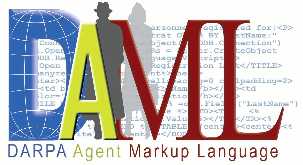
OntoMerge
Ontology Translation by Merging Ontologies
Ontology Translation by Merging Ontologies
Dejing Dou, University of Oregon (dou@cs.uoregon.edu)
Peishen Qi, Yale University (peishen.qi@yale.edu)

 |
OntoMergeOntology Translation by Merging OntologiesDejing Dou, University of Oregon (dou@cs.uoregon.edu) Peishen Qi, Yale University (peishen.qi@yale.edu) |

|
Our idea is that ontology translation is best thought of in terms of ontology merging. We define ontology as a formal specification of a vocabulary of concepts, including axioms relating these concepts. The merge of two ontologies is obtained by taking the union of the axioms defining them, using XML namespaces to avoid name clashes. We then add bridging axioms that relate the terms in one ontology to the terms in the other. Inferences can be conducted in this merged ontology in either a demand-driven (backward-chaining) or data-driven (forword chaining) way.
Software Description
OntoMerge serves as a semi-automated nexus for agents and humans to find ways of coping with notational differences between ontologies with overlapping subject areas. OntoMerge is developed on top of PDDAML (PDDL-DAML Translator) and OntoEngine (inference engine). (These are built using some code from other people's programs, such as Jena (from HP Research) and JTP (from SRI/KSL).)
Try it!
OntoMerge is available over the World Wide Web. Please visit our online service to have a try.
What can it do?:
OntoMerge accepts
We have added a query-driven (backward-chaining) version in which the translation runs the other way, from target to source, as queries come in. The choice of data-driven or query-driven depends on how many queries one expects.
For OntoMerge to work, it has to have stored in its library merged ontologies that explain how terms from different ontologies relate. Currently its library is meager, but you never know. You may be assured that if you give us an ontology-translation problem OntoMerge can't handle, you will have our prompt attention. That means fast e-mail feedback and (we hope) a practical solution within days.
We have developed some semi-automatic ontology mapping and merging tools to help users to generate merged ontologies by themselves.
Once OntoMerge has a merged ontology for a set of domains, it should be able to handle any data involving those domains. This is not an ad-hoc tool for grinding out syntactic differences between assertion formats, but an inference engine which aims for consistent and complete solutions to problems.